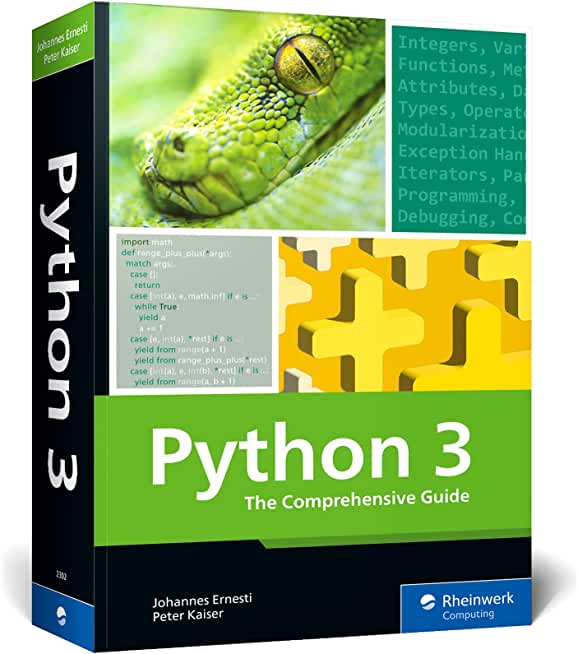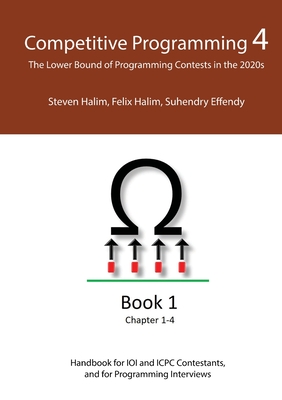Module 1- 802.11
-
Overview
-
Airborne Viruses
-
Types of Wireless
-
Standards Comparison
-
Wireless Network Topologies
-
SSID (Service Set Identity)
-
Wireless Technologies – Service Set ID
-
Securing and Protecting Wireless Best Practices
-
Typical Wired/Wireless Network
-
1X: EAP Types
-
EAP Advantages/Disadvantages
-
EAP/TLS Deployment
-
New Age Protection
-
New Age Protection
-
Wireless Security Technologies
-
MAC Filtering
-
Wired Equivalent Privacy
-
Wireless Technologies – WEP
-
XOR – Basics
-
How WPA improves on WEP
-
How WPA improves on WEP
-
TKIP
-
11i – WPA2
-
WPA and WPA2 Mode Types
-
WPA-PSK Encryption
-
LEAP
-
Wireless Security Weaknesses
-
Weak IV Packets
-
WEP Weaknesses
-
The WPA MIC Vulnerability
-
LEAP Weaknesses
-
Wireless Threats
-
NetStumbler
-
Tool: Kismet
-
Analysis Tool: OmniPeek Personal
-
Omni Peek Console
-
Tool: Aircrack-ng Suite
-
Tool: Airodump-ng
-
Tool: Aireplay
-
DOS: Deauth/disassociate attack
-
Tool: Aircrack
-
Aircrack for Windows
-
Attacking WEP
-
Attacking WPA
-
coWPAtty
-
Exploiting Cisco LEAP
-
asleap
-
WiFiZoo
-
Wesside-ng
-
Review
Module 2 – Access Control
-
Role of Access Control
-
Layers of Access Control
-
Access Control Mechanism Examples
-
Access Control Characteristics
-
Preventive Control Types
-
Control Combinations
-
Models for Access
-
Discretionary Access Control Model
-
Enforcing a DAC Policy
-
Mandatory Access Control Model
-
MAC Enforcement Mechanism – Labels
-
Where Are They Used?
-
MAC Versus DAC
-
Role-Based Access Control (RBAC)
-
Acquiring Rights and Permissions
-
Rule-Based Access Control
-
Access Control Matrix
-
Access Control Administration
-
Access Control Mechanisms in Use Today
-
Strong Authentication
-
Memory Cards
-
Smart Card
-
Administrating Access Control
-
Accountability and Access Control
-
Trusted Path
-
Access Criteria
-
Fraud Controls
-
Thin Clients
-
Administrative Controls
-
Controlling Access to Sensitive Data
-
Other Ways of Controlling Access
-
Technical Access Controls
-
Physical Access Controls
-
Accountability
-
IDS
-
Network IDS Sensors
-
Types of IDSs
-
Behavior-Based IDS
-
IDS Response Mechanisms
-
Trapping an Intruder
-
Access Control Methods
-
Remote Centralized Administration
-
RADIUS Characteristics
-
RADIUS
-
TACACS+ Characteristics
-
Diameter Characteristics
-
Decentralized Access Control Administration Biometrics Technology
-
Biometrics Enrolment Process
-
Downfalls to Biometric Use
-
Biometrics Error Types
-
Crossover Error Rate (CER)
-
Biometric System Types
-
Passwords
-
Password “Shoulds”
-
Password Attacks
-
Countermeasures for Password Cracking
-
Cognitive Passwords
-
One-Time Password Authentication
-
Synchronous Token
-
Asynchronous Token Device
-
Cryptographic Keys
-
Passphrase Authentication
-
Definitions
-
More Definitions
-
Single Sign-on Technology
-
Different Technologies
-
Scripts as a Single Sign-on Technology
-
Directory Services as a Single Sign-on Technology
-
Kerberos as a Single Sign-on Technology
-
Kerberos Components Working Together
-
More Components of Kerberos
-
Kerberos Authentication Steps
-
Tickets
-
Why Go Through All of this Trouble?
-
Issues Pertaining to Kerberos
-
SESAME as a Single Sign-on Technology
-
SESAME Steps for Authentication
Module 3 – Computer Forensics and Legalities
-
Lesson Objectives
-
The Legal System
-
State Law & Criminal Incidents
-
Federal of laws
-
US Title 18: Fraud Criminal Codes
-
Case study: Criminal Incidents
-
Case Study: Criminal Incidents
-
Case study: Criminal Incidents
-
Criminal Incidents
-
International Legal Treaties and Orgs
-
Civil Incidents
-
Criminal Incidents
-
Criminal Incidents
Module 4 – Cryptography Applications
-
Digital Certificates
-
What Do You Do with a Certificate?
-
Components of PKI – Repository and CRLs
-
PGP
-
Digital Signatures – PGP
-
IPSEC
-
IPSec – Network Layer Protection
-
IPSec Key Management
-
IPSec Handshaking Process
-
IPSec Is a Suite of Protocols
-
IPSec Modes of Operation
-
IPSec
-
PKI
-
Public Key Infrastructure
-
Why Do We Need a PKI?
-
PKI and Its Components
-
Let’s Walk Through an Example
-
Public Key Infrastructure
-
Asymmetric Encryption
-
Public Key Cryptography Advantages
-
Symmetric versus Asymmetric
-
SSL/TLS
-
PPP
-
VPN
-
Site-to-Site VPN
-
myspace.com
-
facebook.com
-
Others From Around the World
-
Identity Theft and MySpace
Module 5 – Cryptography Algorithms and Concepts
-
Symmetric Cipher – AES
-
Crack Times
-
Crypto and Password Recovery Concepts
-
Crypto Attacks
-
Caesar Cipher Example
-
Polyalphabetic Substitution
-
Ways of Breaking Cryptosystems Brute Force
-
Attacks on Cryptosystems
-
Encryption
-
Cryptographic Definitions
-
SSH
-
Attack Vectors
-
More Attacks (Cryptanalysis)
-
Type of Symmetric Cipher – Stream Cipher
-
Characteristics of Strong Algorithms
-
Block Cipher Modes – CBC
-
Implementation
-
Block Cipher Modes – CFB and OFB
-
DES
-
Symmetric Ciphers We Will Dive Into
-
Symmetric Algorithm Examples
-
Symmetric Algorithms – DES
-
Evolution of DES
-
Different Modes of Block Ciphers – ECB
-
Other Symmetric Algorithms
-
Symmetric Encryption
-
Symmetric Encryption
-
Symmetric Downfalls
-
Symmetric Algorithms
-
SSL/TLS
-
ECC
-
ECC
-
Quantum Cryptography
-
Asymmetric Algorithm Examples
-
Asymmetric Algorithms We Will Dive Into
-
Asymmetric Algorithm – RSA
-
S. Government Standard
-
Asymmetric Encryption
Module 6 – Key Management
-
Using the Algorithm Types Together
-
Hybrid Encryption
-
Strength of a Cryptosystem
-
Symmetric Key Management Issue
-
Now What?
-
Key Management
-
IPSec Key Management
-
Key Issues Within IPSec
-
OPSEC
-
OPSEC
-
Types of Ciphers Used Today
-
Type of Symmetric Cipher – Block Cipher
-
S-Boxes Used in Block Ciphers
-
Type of Symmetric Cipher – Stream Cipher
-
Encryption Process
-
Symmetric Characteristics
-
Strength of a Stream Cipher
-
Let’s Dive in Deeper
-
Block Cipher Modes – CFB and OFB
-
Implementation
-
Attack Vectors
-
More Attacks (Cryptanalysis)
-
ROT – 13
-
ROT – 13
-
MD5 Collision Creates Rogue Certificate Authority
-
SSL/TLS
-
SSL Connection Setup
-
SSL Hybrid Encryption
-
SSH
-
XOR
Module 7- Cryptosystems
-
Introduction
-
Encryption
-
Cryptographic Definitions
-
Encryption Algorithm
-
Implementation
-
Hashing
-
Common Hash Algorithms
-
Birthday Attack
-
Example of a Birthday Attack
-
Generic Hash Demo
-
Instructor Demonstration
-
Security Issues in Hashing
-
Hash Collisions
-
MD5 Collision Creates Rogue Certificate Authority
-
Digital Signatures
-
Asymmetric Encryption
-
Public Key Cryptography Advantages
-
Asymmetric Algorithm Disadvantages
-
Asymmetric Algorithm Examples
-
Symmetric Encryption
-
Symmetric Encryption
-
Symmetric Downfalls
-
Symmetric Algorithms
-
Crack Times
Module 8 – Digital Acquisition
-
Digital Acquisition Copy – Original
-
Digital Acquisition – Duplication
-
Digital Acquisition Procedures
-
DC3 Operations
-
DCFL Terabytes, Time, & Totals
-
Digital Forensic Analysis Tools
-
Forensic Toolkit (FTK)™
-
EnCase™
-
I-Look Investigator™
-
ProDiscover DFT™
Module 9 – DNS
-
Domain Name Registration
-
Network Service – DNS
-
Countermeasure: DNS Zone Transfers
-
Cache Poisoning
-
What is DNS spoofing?
-
Tools: DNS Spoofing
-
Active Sniffing Methods
-
ARP Cache Poisoning
-
ARP Normal Operation
-
ARP Cache Poisoning
-
ARP Cache Poisoning (Linux)
-
Countermeasures
-
Cybersquatting
-
Domain Hijacking
-
Host Names
-
Hierarchy
-
Host Table
-
Nslookup
-
DNS Databases
-
Using Nslookup
-
Dig for Unix / Linux
-
Protecting Domain Names
-
(Mis)Uses of Host Tables
-
Module 10 – Disaster Recovery and Business Continuity Planning
-
Business Continuity Objectives
-
Pieces of the BCP
-
Where Do We Start?
-
Why Is BCP a Hard Sell to Management?
-
Agenda
-
Plan Development Delegated to a Committee
-
BCP Risk Analysis
-
How to Identify the Most Critical Company Functions
-
Interdependencies
-
Identifying Functions’ Resources
-
How Long Can the Company Be Without These Resources?
-
Preventative Measures
-
What Items Need to Be Considered?
-
Proper Planning
-
Executive Succession Planning
-
Identify Vulnerabilities and Threats
-
Categories
-
Loss Criteria
-
Agenda
-
Disk Shadowing
-
Backing Up Over Telecommunication
-
Serial Lines
-
HSM
-
SAN
-
Co-Location
-
Agenda
-
Facility Backups – Hot Site
-
Facility Backups – Warm Site
-
Facility Backups – Cold Site
-
Compatibility Issues with Offsite Facility
-
Which Do We Use?
-
Choosing Offsite Services
-
Subscription Costs
-
Choosing Site Location
-
Other Offsite Approaches
-
Agenda
-
Results from the BIA
-
Now What?
-
Priorities
-
Plan Objectives
-
Defining Roles
-
Environment
-
Operational Planning
-
Preventive Measures
-
Emergency Response
-
Recovery
-
Return to Normal Operations
-
Reviewing Insurance
-
When Is the Danger Over?
-
Now What?
-
Testing and Drills
-
Types of Tests to Choose From
-
What Is Success?
-
BCP Plans Commonly and Quickly
-
Become Out of Date
-
Phases of Plan
-
Who Is Ready?
-
Review
Module 11 – Endpoint Security
-
3rd Party Applications
-
Anti-Virus Limitations
-
Browser Defense
-
SSL/TLS
-
SSL Connection Setup
-
SSL Hybrid Encryption
-
SSH
-
IPSec – Network Layer Protection
-
IPSec
-
IPSec
-
Public Key Infrastructure
-
Quantum Cryptography
-
Endpoint Whitelist
-
Firewalls, IDS and IPS
-
Firewall – First line of defense
-
IDS – Second line of defense
-
IPS – Last line of defense?
-
Firewalls
-
Firewall Types: (1) Packet Filtering
-
Firewall Types: (2) Proxy Firewalls
-
Firewall Types – Circuit-Level Proxy Firewall
-
Type of Circuit-Level Proxy – SOCKS
-
Firewall Types – Application-Layer Proxy
-
Firewall Types: (3) Stateful
-
Firewall Types: (4) Dynamic Packet-Filtering
-
Firewall Types: (5) Kernel Proxies
-
Firewall Placement
-
Firewall Architecture Types – Screened Host
-
Risks of Portable Devices
Module 12 – Honeypots, Honeynets, Honeytokens, Tarpits, oh my
-
Benefits and Drawbacks
-
Honeypots Defined
-
Legal Issues
-
Trying to Trap the Bad Guy
-
Companies Can Be Found Liable
-
Technologies
-
Incident Handling and the Legal System 481
-
Chain of Custody and Digital Evidence Collection Objectives
-
Evidence Collection & Incident Assessment
-
Identifying an Incident
-
Steps to handling an Incident
-
Digital Incident Assessment
-
Incident Response Checklist
-
Responding to An Incident
-
Suggested Guidelines for Securing Digital Evidence
-
Secure Digital Evidence
-
Common Incident Handling Mistakes
-
Securing Digital Evidence Procedure
-
Chain of Custody
-
Potential Digital Evidence
-
Search and Seizure
-
Incident/Equipment Location
-
Available Response Resources
-
Securing Digital Evidence
-
Digital Evidence Presentation
-
The Best Evidence Rule
-
Duplication and Recordings, Evidence Law
Module 13 – IP Terms and Concepts
-
OSI – Application Layer
-
Devices Work at Different Layers
-
Network Devices – Gateway
-
Data Encapsulation
-
Protocols – ICMP
-
Dial-Up Protocol – SLIP
-
Dial-Up Protocol – PPP
-
WAN Technologies Are Circuit
-
or Packet Switched
-
Packets
-
Frame
-
Protocols – ICMP
-
Port and Protocol Relationship
-
Example Packet Sniffers
-
Tool: Wireshark
-
Tool: OmniPeek
-
Sniffer Detection using Cain & Abel
-
Network Protocol
-
Network Protocol
-
Protocols
-
UDP versus TCP
-
Port and Protocol Relationship
-
An Older Model
-
TCP/IP Suite
-
Traceroute Operation
-
Traceroute (cont.)
-
Other Traceroute Tools
-
IP
-
IP
-
Method: Ping
Module 14 – Logging
Module 15 – Malicious Software
-
Malware
-
Types of Malware
-
Distributing Malware
-
Malware Capabilities
-
Auto Starting Malware
-
Countermeasure: Monitoring Auto-start Methods
-
Malicious Browser Content
-
Malware Defense Techniques
-
Spy Sweeper Enterprise
-
CM Tool: Port Monitoring Software
-
CM Tools: File Protection Software
-
CM Tool: Windows File Protection
-
CM Tool: Windows Software
-
Restriction Policies
-
Company Surveillance Software
-
CM Tool: Hardware-based Malware
-
Detectors
-
Countermeasure: User Education
-
Propagation Techniques
-
Trojan Horse Characteristics
-
Trojan Horses
-
Executable Wrappers
-
Benign EXE’s Historically Wrapped with Trojans
-
The Infectious CD-Rom Technique
-
Trojan: Backdoor.Zombam.B
-
Trojan: JPEG GDI+
-
All in One Remote Exploit
-
Advanced Trojans: Avoiding Detection
-
BPMTK
-
Virus Types
-
Types of Malware Cont…
-
Types of Viruses
-
Worm Characteristics
Module 16 – Managing Security Policy
-
Approach to Security Management
-
Policy Types
-
Policies with Different Goals
-
Industry Best Practice Standards
-
Components that Support the Security Policy
-
Senior Management’s Role in Security
-
Security Roles
-
Information Classification
-
Information Classification Criteria
-
Declassifying Information
-
Types of Classification Levels
-
Information Classification
-
Issue Specific Policy
-
Policy Assessment
-
Policy Benefits
-
Policy Development Tools
-
Security Posture and Culture
Module 17 – Methods of Attack
-
Enumeration Overview
-
DNS Enumeration
-
Backtrack DNS Enumeration
-
SNMP Enumeration Tools
-
SNMP Enumeration Countermeasures
-
Active Directory Enumeration
-
AD Enumeration countermeasures
-
Hacking Tool: RootKit
-
Windows RootKit Countermeasures
-
Advanced Trojans: Avoiding Detection
-
Benign EXE’s Historically Wrapped with Trojans
-
Google and Query Operators
-
Google (cont.)
-
SPUD: Google API Utility Tool
-
Goolag
-
Denial of Service
-
Denial of Service
-
Threat Methodologies (STRIDE)
-
DDoS Issues
-
DDoS
-
Buffer Overflow Definition
-
Overflow Illustration
-
Buffer OverFlows
-
Phishing
-
Spear Phishing
-
E-Mail Links
-
Logic Bomb
-
Duronio Case
-
Attacks
-
Man-in-the Middle
-
Replay Attack
-
SPAM and e-mail Flooding
Module 18 – Mitnick-Shimomura
-
IP Address Spoofing
-
TCP
-
DoS
Module 19 – Physical Security
-
Physical Security
-
Physical Security Checklist
-
Physical Security Checklist
-
Items of Interest
-
Physical Controls
-
Physical Access
-
Tool Kit: Picks
-
Tool Kit: Snap Gun
-
Tool Kit: Electric Pick
-
Bump Keying
-
Lock Picking Countermeasures
-
Controlling Access
-
Agenda
-
Facility Attributes
-
Electrical Power
-
Problems with Steady Power Current
-
Power Interference
-
Power Preventive Measures
-
Fire Prevention
-
Automatic Detector Mechanisms
-
Fire Detection
-
Fire Types
-
Suppression Methods
-
Fire Suppression
-
Fire Extinguishers
Module 20 – Risk Management & Security Frameworks
-
Overview
-
IT Governance Best Practices
-
IT Risk Management
-
Types of Risks
-
Risk Management
-
Information Security Risk Evaluation
-
Information Security Risk Evaluation
-
Improving Security Posture
-
Risk Evaluation Activities
-
Risk Assessment
-
Information Gathering
-
Information Gathering
-
Data Classification
-
Threats and Vulnerabilities
-
Analytical Methods
-
Evaluate Controls
-
Evaluate Controls
-
Risk Ratings
-
Important Risk Assessment Practices
-
Review
-
Security Incentives & Motivations
-
Security Incentives & Attack Motivations
-
Risk Management II
-
What is Your Weakest Link?
-
What Is the Value of an Asset?
-
Examples of Some Vulnerabilities that Are
-
Not Always Obvious
-
Categorizing Risks
-
Some Examples of Types of Losses
-
Different Approaches to Analyzing Risks
-
Who Uses What Analysis Type?
-
Qualitative Analysis Steps
-
Quantitative Analysis
-
Can a Purely Quantitative Analysis Be Accomplished?
-
Comparing Cost and Benefit
-
Cost of a Countermeasure
-
Security Frameworks & Compliance
-
ISO 27002
-
ISO 27002: Control Components
-
Review
Module 21 – Security and Organizational Structure
-
Capacity Analysis
-
Employee Discipline and Termination
-
Employee Performance
-
Employee Retention
-
Filling Positions
-
Conflicts of Interest
Module 22 – Security Awareness
-
Security Awareness Program
-
4 steps
-
3 Common Training Models
-
Security Awareness Goals
-
Role of metrics
-
Steps to develop a metrics program
Module 23 – Steganography
-
Crypto and Password Recovery Background
-
Steganalysis
-
Steganography Methods
-
Injection
-
Substitution
-
File Generation
Module 24 – The Intelligent Network – Unified Threat Management (UTM)
-
UTM product criteria
-
Firewalls, IDS and IPS
-
Firewall – First line of defense
-
IDS – Second line of defense
-
IPS – Last line of defense?
-
Firewalls
-
Firewall Types: (1) Packet Filtering
-
Firewall Types: (2) Proxy Firewalls
-
Firewall Types – Circuit-Level Proxy Firewall
-
DDoS Issues
-
HIPS
-
HIPS
-
Unified Threat Management
-
Unified Threat Management
-
Virtualization – Type 1
-
Type 1 Examples
-
Virtualization – Type 2
-
Type 2 Examples
Module 25 – Network Infrastructure
-
Wikto Web Assessment Tool
-
Agenda
-
Network Topologies – Physical Layer
-
Network Topologies – Mesh
-
Summary of Topologies
-
Wireless Technologies – War Driving
-
TCP Model
-
TCP/IP Suite
-
OSI Model
-
OSI – Application Layer
-
OSI – Presentation Layer
-
OSI – Session Layer
-
OSI – Transport Layer
-
OSI – Network Layer
-
OSI – Data Link
-
OSI – Physical Layer
-
Wide Area Network Technologies
-
Voice Over IP
-
VLAN
-
Network Segmentation
Module 26 – Vulnerability Assessment – Outside View
-
Basic Hacker Process
-
Potential Threats, Vulnerabilities, & Risks
-
What is a Penetration Test
-
Types of Penetration Testing
-
Vulnerability Assessment vs Pentest
-
“Hacking-life-cycle” – a Methodology
-
Methodology for Penetration
-
Testing / Ethical Hacking
-
Hacker vs. Penetration Tester
-
Not Just Tools
-
Exploitation Tools vs. Vulnerability Scanners
-
Vulnerability Scanners
-
Nessus
-
Nessus Report
-
SAINT
-
SAINT – Sample Report
-
Tool: Retina
-
Qualys Guard
-
Tool: LANguard
-
Number of Exploitable Vulnerabilities from NVD Detected
-
Scan Process Best Practices
-
Inside, outside and user view
-
Manager’s Role in Remediation
-
Risks of non-Remediation
-
Pentesting in Vulnerability Management
-
Scanning Techniques
-
Threat Concerns
-
Threat Vectors
-
War Dialing
Module 27 – Vulnerability Management – inside view
-
Inside view, tools, approach
-
org
-
SP 800-40 Version 2.0
Module 28- Vulnerability Management- User View
-
Peer to Peer Networks
-
P2P Cautions
-
Instant Messaging
-
IM issues
-
Social engineering
Module 29 – Web Communications
-
CGI
-
Wikto Web Assessment Tool
-
OWASP Top 10 for 2010
-
Reflected Cross Site Scripting Illustrated
-
IIS Directory Traversal
-
Injection Flaws
-
SQL Injection
-
Cookies
-
HTTP
-
HTTPS
-
FTP
Module 30 – Wireless Advantages and Bluetooth
-
Bluetooth Attacks
-
Cabir Infection
-
Bluetooth Defenses
-
Bluetooth & Wireless Comparison






